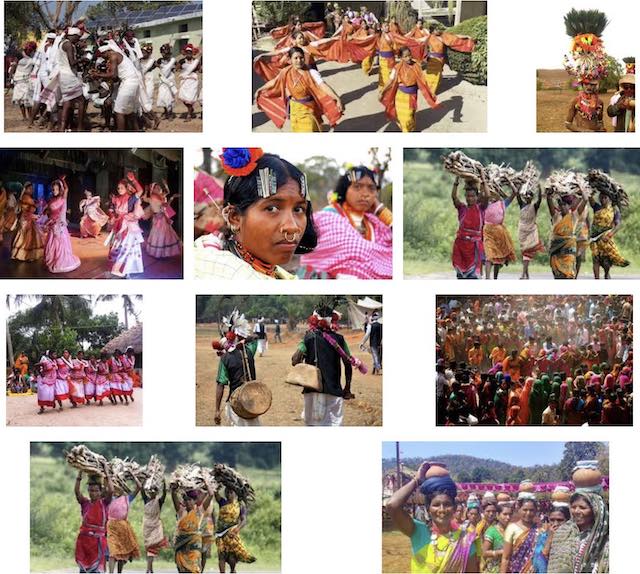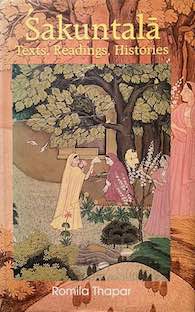“Many voices of history … are what well known historian Romila Thapar brings out in her works. In this exclusive interview, she talks about changing trends in research, corruption in society and why she refused the Padma Bhushan.” – Excerpts from an interview by Pushpa Chari for The Hindu in 2012:
Today, environmental history or understanding history through environmental change, is gaining ground. Have you built it into your work?
Environmental history is being researched in a much bigger way than before. This is apparent in discussions on the decline of Harappan cities. What caused the decline? Today we know that invasions and conquest are very often really quite marginal. More likely factors could be deforestation, possible changes in climate at that time, changes in sea level and the silting up of settlements, flooding, changing river courses like that of the Satlej or the disappearance of the Hakra, and the proximity of settlements to particular ecologies.
I wrote a paper called “Perceiving the Forest‘ where I’ve tried to look at the way people observed and wrote about the forest at different times, and to see how over time it changes. It starts off as the wilderness which is the unknown, and full of demons, the unexpected, feared. And then slowly it changes with settlements and with routes cutting through it, and gradually the forest is not feared, and becomes a part of the cultural scene. […]
Languages develop, expand, become sub-languages or incorporate languages. We don’t know what language the Harappans spoke. Subsequently, the most widely used language was Prakrit up to the early centuries AD and later was replaced by Sanskrit in northern India. Still later the regional languages came into use. In the south an early form of Tamil was current from the start and then the regional languages. To argue that there was always a single language is historically problematic. […]
The resentment against present day corruption is its magnitude and its omnipresence. The citizen has absolutely no resort to getting anything done without conceding to a corrupt practice of some sort.
When corruption becomes so rampant, we must recognise that we are living in a society which is founded on immorality and an absence of ethics. This is not what makes for a civilisation.
Source: “Many voices of history” by Pushpa Chari, The Hindu, 31 March 2012
Address : http://www.thehindu.com/arts/magazine/article3261226.ece
Date Visited: Tue Apr 03 2012 19:21:24 GMT+0200 (CEST)
“[T]he Constitution gives equal respect to all communities, sects, lingual and ethnic groups, etc. The Constitution guarantees to all citizens freedom of speech (Article 19), freedom of religion (Article 25), equality (Articles 14 to 17), liberty (Article 21), etc.” – Supreme Court judgment quoted by The Hindu in “India, largely a country of immigrants” >>
In Marginalised but not Defeated, Tarun Kanti Bose (a seasoned public interest journalist) “documents the hard and difficult struggle to implement the Forest Rights Act, how the oppressed adivasis have united into forest unions, how they are now entering into new thresholds of protracted struggles and victories in a non-violent manner. […] A must for all young journalists, social science students, editors, civil society groups and the academia.” | Read the full book review here:
https://countercurrents.org/2023/05/book-review-marginalised-but-not-defeated >>
Learn more about “The world’s largest democracy“, its Constitution and Supreme Court and linguistic heritage, and why Democracy depends on Accountability in the face of Modernity and Globalization >>
Sati [widow self-immolation] was likely alien to the Harappans, but in the mixed culture that arose later, it gained a foothold among the various elites and became part of the Indo-Aryan cultural legacy in the subcontinent. […] was likely alien to the Harappans, but in the mixed culture that arose later, it gained a foothold among the various elites and became part of the Indo-Aryan cultural legacy in the subcontinent. […]
Many modern Hindus revere their Sanskritic Vedas as the fountainhead of their religion, but the Harappan substrate that lives on today its both older and arguably more pervasive, especially in what we might call ‘folk Hinduism’, with its mother goddesses, guardian deities, reverence for certain trees and animals and perhaps even spiritual meditative practices. […]
The Harappans invite us to ponder the deepest questions about human nature and culture. Facing ecological challenges as we do today, Dholavirans responded with immense creativity and resolve. Perhaps it is their vulnerability and struggles that make them more endearing to us. Given the looming climate crisis, will our modern age last longer than their mature period of 700 years?
Source: Indians: A Brief History of a Civilization by Namit Arora (Gurgaon: Penguin/Viking, 2021), pp. 37-39
URL: https://worldcat.org/en/title/1235947581
In recent decades, deforestation and landscape change from the construction of dams, intensified agriculture, timber plantations and mining for bauxite and other minerals in the Northern Eastern Ghats has negatively impacted communities. It has resulted in non-availability or decrease in availability of forest produce. This has manifested in the lack of trees for building houses, unavailability of gum karaya Sterculia urens, kunkudukaaya Sapindus emarginatus, and honey as the larger gum and nut yielding and beehive preferred trees like Adina cordifolia and Dalbergia sissoo have been cut down. They now need to travel greater distances to access bamboo and other forest produce. The death of toddy palm trees, because toddy tapping was no longer practiced, has also been observed by communities.
Source: “Displaced from the hills: Livelihoods of tribal communities in Eastern Ghats under threat” by Vikram Aditya (Down to Earth, 24 February 2021)
URL: https://www.downtoearth.org.in/blog/forests/displaced-from-the-hills-livelihoods-of-tribal-communities-in-eastern-ghats-under-threat-75657
Date visited: 23 March 2021
[Bold typeface added above for emphasis]
“The natural wealth with which much of tribal India is endowed is also its bane. […] The Adivasi is wedged between the state programme for development, meaning mines, dams, steel plants and roads, and a private agenda for quick money, which is currently termed ‘real estate’.” – Madhu Ramnath, Preface for Woodsmoke and Leafcups >>
Up-to-date reports by Indian experts and journalists
Search tips
Combine the name of any particular state, language or region with that of any tribal (Adivasi) community.
Add keywords of special interest (music, poetry, dance just as health, sacred grove and biodiversity); learn about the rights of Scheduled Tribes such as the “Forest Rights Act” (FRA); and the United Nations “Declaration on the Rights of Indigenous Peoples”, “Universal Declaration of Human Rights”, “women’s rights”, or “children’s right to education”.
Ask a question that includes “tribal” or “Adivasi”, for instance: “Adivasi way of life better?” (or “tribal way of life worse?”)
Specify any particular issue or news item (biodiversity, bonded labour and human trafficking, climate change, ecology, economic development, ethnobotany, ethnomedicine, global warming, hunter-gatherers in a particular region or state, prevention of rural poverty, water access).
For official figures include “scheduled tribe ST” along with a union state or region: e.g. “Chhattisgarh ST community”, “Himalayan tribe”, “Scheduled tribe Tamil Nadu census”, “ST Kerala census”, “Particularly Vulnerable Tribal Group Jharkhand”, “PVTG Rajasthan”, “Adivasi ST Kerala”, “Adibasi ST West Bengal” etc.
In case the Google Custom Search window is not displayed here try the following: (1) toggle between “Reader” and regular viewing; (2) in your browser’s Security settings select “Enable JavaScript” | More tips >>
Note: hyperlinks and quotes are meant for fact-checking and information purposes only | Disclaimer >>
List of websites covered by this Google custom search engine
Academia.edu (platform for academics to share research papers) – www.academia.edu
Archive.org – https://archive.org
Centre for Science and Environment – https://www.cseindia.org
Current Conservation – https://www.currentconservation.org
Development and Cooperation (D+C) https://www.dandc.eu
Down To Earth (India) – www.downtoearth.org.in
India Environment Portal – www.indiaenvironmentportal.org.in
Harnessing Nature Magazine – https://harnessingnature.online
Mongabay-India – https://india.mongabay.com
M S Swaminathan Research Foundation – www.mssrf.org
Navdanya (protecting India’s biodiversity based food heritage) – https://navdanya.org
Third World Network (Penang, Malaysia) – https://twn.my
The Shola Trust (nature conservation in the Nilgiri region) – www.thesholatrust.org

Indian online periodicals and platforms | Images view >>
~ ~ ~
Personalize your CustomSearch by combining other search words >>
(e.g. name of a tribal community and region, a craft, or dance and puppetry)
Research the above issues with the help of Shodhganga: A reservoir of theses from universities all over India, made available under Open Access >>
Note: hyperlinks and quotes are meant for fact-checking and information purposes only | Disclaimer >>
